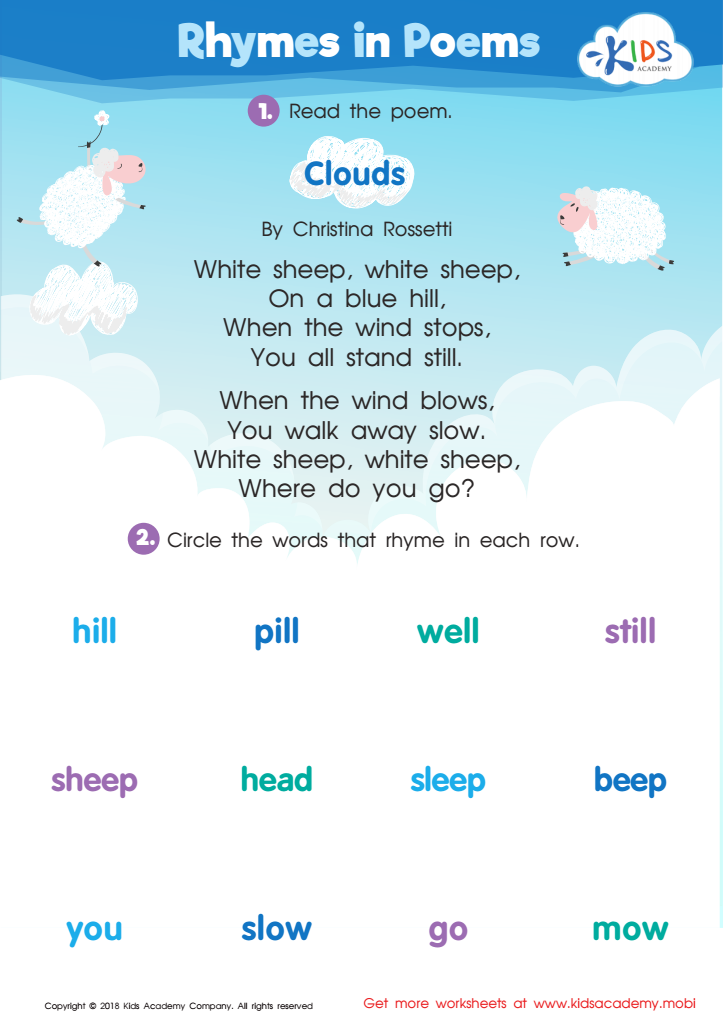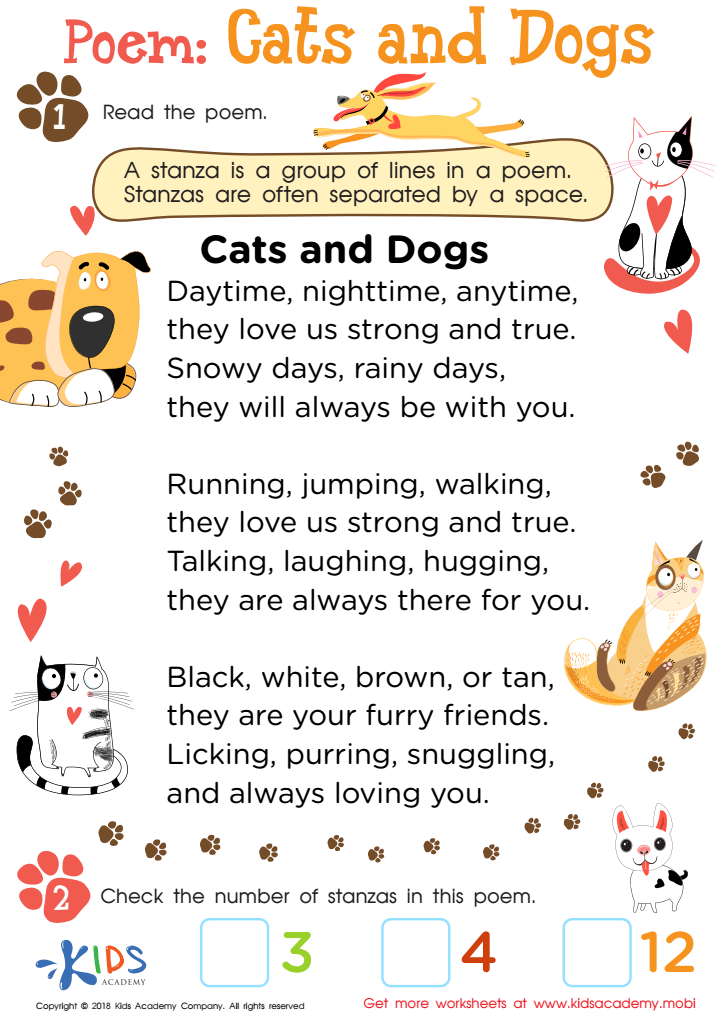Reading comprehension Normal Rhyming Worksheets for 8-Year-Olds
3 filtered results
-
From - To
Unlock your child's potential with our engaging Reading Comprehension Normal Rhyming Worksheets designed specifically for 8-year-olds! These colorful, fun worksheets combine the joy of rhymes with vital reading comprehension skills, making learning an exciting adventure. Each activity encourages young learners to match rhyming words, solve puzzles, and enhance their vocabulary while fostering a love for reading. Our expertly crafted materials support essential developmental milestones, promoting critical thinking and language skills in a playful, interactive format. Perfect for classrooms or at-home learning, these worksheets are an invaluable resource to help your child thrive in literacy. Get started today and watch them shine!


Rhymes in Poems Worksheet


Rhyming Words Rhyming Worksheet


Poem: Cats and Dogs Worksheet
Reading comprehension and normal rhyming are crucial for developing an 8-year-old’s language skills and cognitive abilities. At this age, children are transitioning from learning to read to reading to learn. When they grasp reading comprehension, they can better understand narratives and informational texts, enhancing their overall learning experience.
Engaging with rhymes plays a significant role in this developmental phase. Rhyming highlights sound patterns, thus improving phonological awareness, which is foundational for reading. When children recognize and predict rhyming words, they develop a sense of rhythm and sound in language, making reading more enjoyable. This enjoyment encourages a love for reading, leading to greater exploration of texts.
Furthermore, parents and teachers should know that fluent readers often possess strong comprehension skills. Understanding rhyme can facilitate improved comprehension as children learn to decode words more easily and predict text structure. It stimulates cognitive connections between words and ideas, allowing for deeper understanding and retention.
Ultimately, by supporting reading comprehension and the appreciation of normal rhyming, parents and teachers lay the groundwork for successful literacy skills, lifelong learning, and a passion for reading that can benefit students academically and personally. Engaging with these elements positively shapes a child's educational journey.
 Assign to My Students
Assign to My Students

















